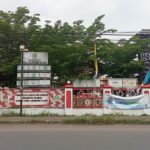
Karangasem Village, located in the Plumbon District of Cirebon Regency, possesses cultural richness that continues to be preserved. One of the most prominent traditions is Ngunjung Buyut Kilipo, a cultural and spiritual pilgrimage carried out by local residents especially in the Sitingal Block as a form of respect for their ancestor, Buyut Kilipo. This tradition is held annually at the end of Maulid Nabi. The celebration expresses gratitude, seeks safety, and strengthens bonds across generations of villagers.
Ngunjung Buyut Kilipo as Dynamic Series of Activities
Although held annually, the series of events during Ngunjung Buyut Kilipo is dynamic and may vary from year to year, depending on the funds collected from residents and donors. The event duration ranges from three to seven days. However, two main events are always mandatory in every celebration:
- Wayang Kulit
- Pengajian
In addition to these two core activities, other events that often enrich the Ngunjung Buyut Kilipo celebration include:
- Torch Parade (Pawai Obor), symbolizing self-purification and spiritual enlightenment
- Topeng Dance (Tari Topeng), which conveys moral values and local wisdom
- Panggung Gembira, showcasing qosidah and children’s artistic performances
- Distribution of door prizes, to enliven the atmosphere and encourage resident participation
- Food sharing and almsgiving, distributed among residents as an act of social concern
These events create a festive yet meaningful atmosphere, supported by strong religious and spiritual values.
Wayang Kulit: A Myth That Comes True in Ngunjung Buyut Kilipo

One of the most fascinating aspects of this tradition is the Wayang Kulit performance, which is now a mandatory event. The story began when the organizing committee once faced limited funds and decided to cancel the performance. However, someone from the Wayang Kulit troupe unexpectedly came to the committee, claiming that their group had already been booked to perform on behalf of Buyut Kilipo—despite no such request being made. This incident became a local legend believed to be a form of spiritual intervention by Buyut Kilipo himself. Since then, Wayang Kulit has always been part of the Ngunjung Buyut Kilipo celebration, symbolizing the ancestral will and the continuity of tradition.
Pengajian
After all cultural events conclude, the celebration always ends with a Pengajian. During this moment, the residents pray for the spirits of their ancestors, particularly Buyut Kilipo, and engage in spiritual reflection. People from all levels of society attend the gathering, and local religious figures lead the event. With solemn hearts, the community prays for safety and blessings for the village, families, and future generations. The recitation reminds everyone that tradition involves not only culture and entertainment, but also a vertical relationship between people and God.
Preserving Tradition Amid Modern Challenges
In the modern era, preserving traditions like Ngunjung Buyut Kilipo presents many challenges. The community must address issues such as limited funding, decreasing interest among the younger generation, and the influx of external cultural influences. However, the people of Karangasem continue to innovate by promoting the event through social media, involving youth in the organizing committee, and collaborating with cultural communities. They aim not only to help this tradition survive but also to ensure it remains relevant for future generations.
Ngunjung Buyut Kilipo reflects the local wisdom and spirituality of the people of Karangasem Village. Celebrated at the end of Maulid Nabi, the tradition merges cultural, religious, and social elements into one meaningful event. From mythical Wayang Kulit performances to solemn Pengajian gatherings, each aspect of the celebration shows that ancestral heritage is still very much alive and deeply respected.
By: Dian Purbaningrum


